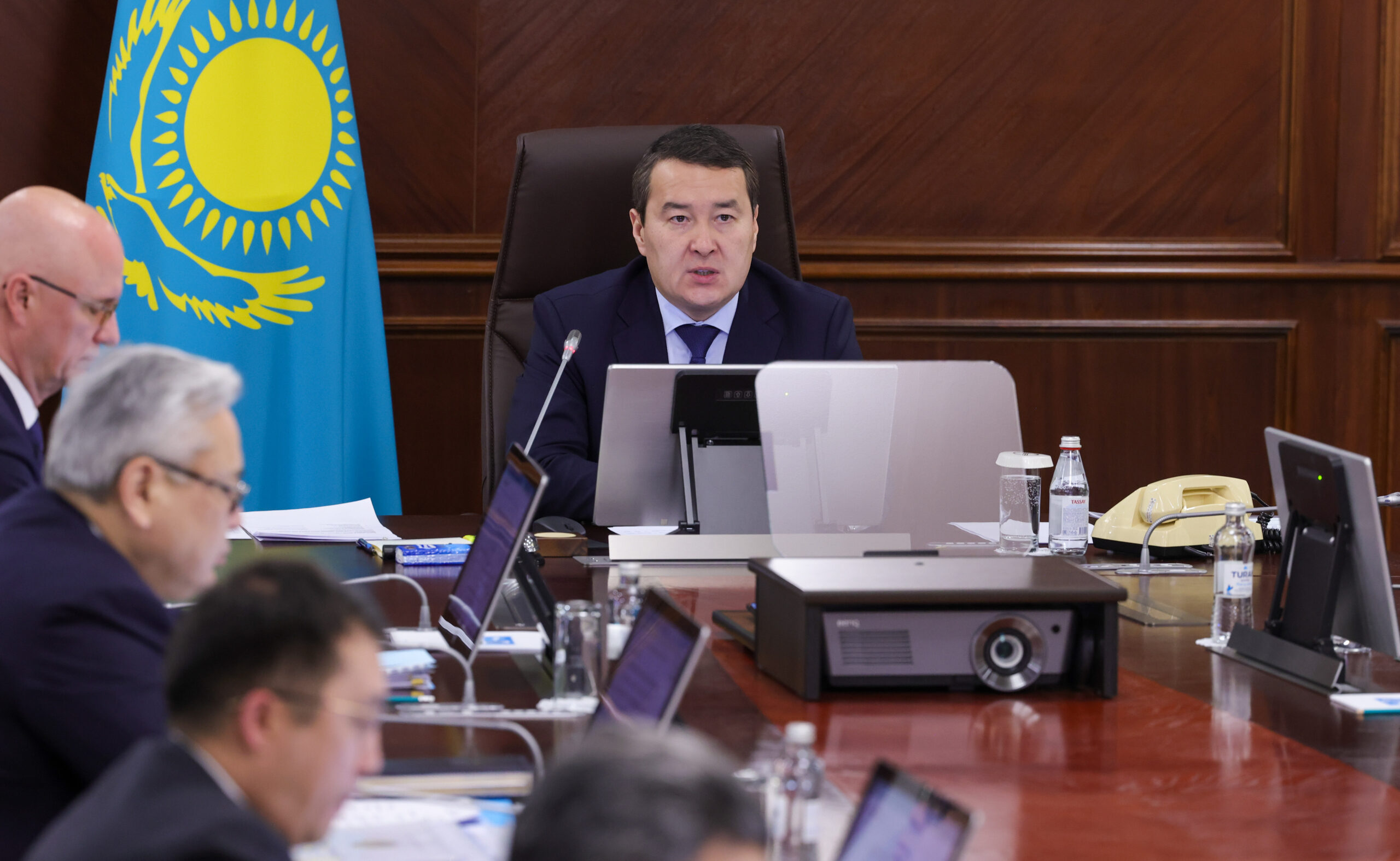ASTANA – In January-November this year, Kazakh seaports served a quarter more vessel calls compared to the same period last year, said Minister of Transport Marat Karabayev at a Dec. 12 government meeting chaired by the Prime Minister Alikhan Smailov, reported the Prime Minister’s press service.

Photo credit:Primeminister.kz
However, the growing intensity of shipping and the shallowing of the Caspian Sea require the accelerated creation of a navigation safety system.
Cargo transshipment in Kazakh seaports
Over 11 months, seaport transportation totaled 6.5 million tons, 10% more than last year. The largest share falls on export transportation of Kazakhstan goods to European countries.
The transportation volume via the Trans-Caspian International Transport Route (TITR), or the Middle Corridor, has doubled compared to last year and reached 2.5 million tons. The export volume of Kazakh products via TITR showed a threefold increase. Growth in import cargo traffic indicates European companies’ interest in this route. However, the volume of transit cargo transportation in the east-west direction has decreased. The main reason is the reduction in freight rates on the Southern Sea route.
Kazakhstan aims to increase the traffic volumes along the TITR by five times and takes measures alongside Azerbaijan, Georgia, and Türkiye for the synchronous development of transport infrastructure.
By 2027, the countries expect to increase the throughput capacity from six million tons to 10 million tons per year and reduce delivery times to 14-18 days, including five days across Kazakhstan.
Given the dynamic growth of transportation, the Transportation Ministry will focus on dredging the waters of seaports, developing terminal facilities and railway infrastructure suitable for ports, digitalizing transport corridors, developing the merchant fleet, and ensuring maritime safety.
Earlier, the Aktau Sea Trade Port regained the status of a seaport of international significance following a government resolution adopted on Sept. 21.
Development of port facilities
Smailov noted that water transport is the most popular in the world. It accounts for over 60% of cargo turnover and 80% of all international trade.
“Kazakhstan has no access to the world’s oceans, so we are developing all types of transport. Moreover, due to the geopolitical situation in the world and the breakdown of traditional communication routes, there is a need to find alternative routes. A striking example is the Trans-Caspian International Transport Route,” said Smailov.
He added that for the full development of domestic seaports, dredging work in Kuryk will be completed by the end of next year and in Aktau in 2025. This will make it possible to attract large-tonnage vessels.
According to Karabayev, Kazakhstan negotiates with potential investors to develop terminal facilities in these areas, such as Abu Dhabi Ports, Rhenus, and Shandong Port. Kazakhstan also signed an agreement with Lianyungang port to start the construction of a container hub in Aktau next year. The construction of grain terminals in the Kuryk port was completed this year. Also, terminals for general cargo, as well as for transshipment of green hydrogen, will be built at the port. The total investment in developing Kuryk port terminals will exceed $200 million.
In October, a new Sarzha multifunction marine terminal launched at the Kuryk seaport.
“The potential of our seaports is very high; it is possible to transship cargo three times more than now. Therefore, it is necessary to eliminate all bottlenecks to use the existing resources of our infrastructure efficiently,” Smailov highlighted.
On Kazakhstan’s request, construction of the first ferries will begin next year. It is planned that in 2027, there will already be four of them. Smailov emphasized the need to consider the construction of a shipbuilding plant shortly in Kazakhstan.
Development of transit capabilities of the Irtysh River
According to Smailov, the country shall solve questions regarding the expansion of junction railway stations and access roads to ports, as well as cargo clearance procedures.
“Kazakhstan has the opportunity to increase cargo transportation along the Irtysh River by almost 2.5 times. To achieve this, it is necessary to improve the existing infrastructure and increase the fleet of ships. In general, the development of water transport will have a multiplier effect on the growth of the transport industry, transit, and trade,” Smailov emphasized.
Karabayev outlined that the development of transit capabilities of the transboundary Irtysh River will make it possible to connect Russia and China with new transport links. To develop this route, a new shipping lock will be constructed near Semei, a port will be built near the village of Tugyl, and a railway will be stretched to the border with China on the Tugyl-Maikapchagay section with a length of 99 kilometers. Thus, transportation volume is expected to reach 2-2.5 million tons.


